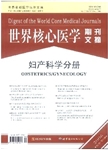睾丸活检组织学结果的变异与卵母细胞单精子显微注射治疗男性不孕症的相关性
Variability in testis biopsy interpretation: Implications for male infertility care in the era of intracytoplasmic sperm injection作者机构:Department of Urology 1600 Divisadero Street A633 San Francisco CA 94143- 1695 United StatesDr.
出 版 物:《世界核心医学期刊文摘(妇产科学分册)》 (Core Journal in Obstetrics/Gynecology)
年 卷 期:2006年第2卷第1期
页 面:37-38页
学科分类:1002[医学-临床医学] 1001[医学-基础医学(可授医学、理学学位)] 100210[医学-外科学(含:普外、骨外、泌尿外、胸心外、神外、整形、烧伤、野战外)] 100101[医学-人体解剖与组织胚胎学] 10[医学]
主 题:男性不孕症 组织学标本 睾丸活检 显微注射治疗 卵母细胞 kappa检验 单精子 结果一致性 前瞻性队列研究 变异
摘 要:To determine whether center to center discrepancies in the ability to locate sperm in infertile testes with abnormal histology stems in part from inconsistencies in pathologists’ readings of testis biopsies. Design: Prospective cohort study. Setting: Academic male infertility practice. Patient(s): Consecutive series of azoospermic men referred with testis biopsy slides between 1998 and 2003. Intervention(s): Testis biopsy histologies on azoospermic patients referred for infertility care were re-reviewed by a single pathologist blinded to the original reading. Subsequent infertility care was guided by the findings from the second histologic reading. Main Outcome Measure(s): Agreement between the outside and in-house review of testis biopsy readings was assessed with the kappa statistic. Pregnancy outcomes that resulted from clinical decisions informed by the second histologic readings were also assessed. Result(s): Among 113 histologic specimens, re-review was complicated by fixation artifacts in 18 cases (16% ) and insufficient biopsy sample size in 13 cases (12% ). The kappa score for interobserver agreement in readings was 0.43 (95% CI 0.32- 0.54). Mixed histology patterns in particular were underappreciated by outside pathologists (13% of cases on original reading, 36% of cases on review). In 27% of all cases, the differences in biopsy readings had a significant impact on clinical management. Conclusion(s): A correlation between independent testis histology readings in azoospermic men demonstrates frequent inconsistencies. These differences contribute to inaccurate phenotyping of male infertility and can significantly impact the direction of infertility care. These findings highlight the need for a standardized approach to testis histologic review.



